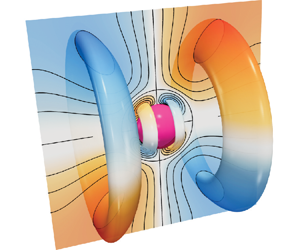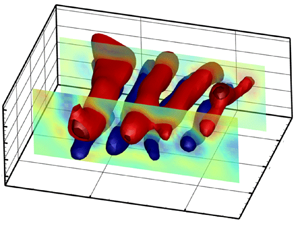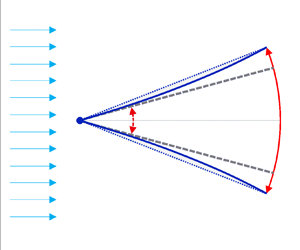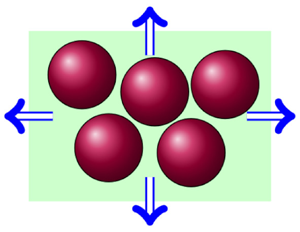Refine listing
Actions for selected content:
1417766 results in Open Access
Indigenous Voices and Votes: Assessing the Dynamics of Indigenous Politics in Chile’s Constitutional Referendum of 2022
-
- Journal:
- PS: Political Science & Politics / Volume 57 / Issue 2 / April 2024
- Published online by Cambridge University Press:
- 10 January 2024, pp. 267-273
- Print publication:
- April 2024
-
- Article
- Export citation
Shifting Electorates and Preferences in Chile’s Constitutional Process
-
- Journal:
- PS: Political Science & Politics / Volume 57 / Issue 2 / April 2024
- Published online by Cambridge University Press:
- 10 January 2024, pp. 248-252
- Print publication:
- April 2024
-
- Article
- Export citation
Constitution-Making in the 21st Century: Lessons from the Chilean Process
-
- Journal:
- PS: Political Science & Politics / Volume 57 / Issue 2 / April 2024
- Published online by Cambridge University Press:
- 10 January 2024, pp. 282-285
- Print publication:
- April 2024
-
- Article
-
- You have access
- Open access
- HTML
- Export citation
Cicero on Plurality and Persuasion
-
- Journal:
- The Review of Politics / Volume 86 / Issue 1 / Winter 2024
- Published online by Cambridge University Press:
- 10 January 2024, pp. 95-98
-
- Article
- Export citation
Shape-shifting and Strategic In/visibility: Comparing Sex Work Activism in Singapore and the Philippines
-
- Journal:
- TRaNS: Trans-Regional and -National Studies of Southeast Asia / Volume 12 / Issue 1 / May 2024
- Published online by Cambridge University Press:
- 10 January 2024, pp. 27-44
-
- Article
-
- You have access
- Open access
- HTML
- Export citation
A cross-cultural archery analogy in Matteo Ricci's Tianzhu shiyi
-
- Journal:
- Bulletin of the School of Oriental and African Studies / Volume 87 / Issue 1 / February 2024
- Published online by Cambridge University Press:
- 10 January 2024, pp. 201-207
- Print publication:
- February 2024
-
- Article
- Export citation
Three-dimensional soft streaming
-
- Journal:
- Journal of Fluid Mechanics / Volume 979 / 25 January 2024
- Published online by Cambridge University Press:
- 10 January 2024, A7
-
- Article
-
- You have access
- Open access
- HTML
- Export citation
Introduction to the Symposium, “Constitution-Making in the 21st Century: Lessons from the Chilean Process”
-
- Journal:
- PS: Political Science & Politics / Volume 57 / Issue 2 / April 2024
- Published online by Cambridge University Press:
- 10 January 2024, pp. 245-247
- Print publication:
- April 2024
-
- Article
- Export citation
Experimental investigation of flow-induced vibration and flow field characteristics of a flexible triangular cylinder
-
- Journal:
- Journal of Fluid Mechanics / Volume 979 / 25 January 2024
- Published online by Cambridge University Press:
- 10 January 2024, A15
-
- Article
- Export citation
Exploring African Abolitionism: Fante Perspectives on Domestic Slavery in the Nineteenth-Century Gold Coast
-
- Journal:
- Law and History Review / Volume 42 / Issue 1 / February 2024
- Published online by Cambridge University Press:
- 10 January 2024, pp. 75-96
- Print publication:
- February 2024
-
- Article
-
- You have access
- Open access
- HTML
- Export citation
Cambrian trilobites from the Nounan Dolomite and lower St. Charles Formation (upper Marjuman to lower Sunwaptan; Miaolingian to Furongian Series), Smithfield Canyon, northern Utah
-
- Journal:
- Journal of Paleontology / Volume 98 / Issue 4 / July 2024
- Published online by Cambridge University Press:
- 10 January 2024, pp. 537-566
-
- Article
-
- You have access
- Open access
- HTML
- Export citation
A World by Themselves: Protectionism and the Political Economy of Trade in the Ohio Valley, 1816–1828
-
- Journal:
- Enterprise & Society / Volume 26 / Issue 1 / March 2025
- Published online by Cambridge University Press:
- 10 January 2024, pp. 94-118
- Print publication:
- March 2025
-
- Article
-
- You have access
- Open access
- HTML
- Export citation
The Sounds of Mandarin: Learning to Speak a National Language in China and Taiwan, 1913–1960 Janet Y. Chen. New York: Columbia University Press, 2023. 412 pp. $35.00 (pbk). ISBN 9780231209038
-
- Journal:
- The China Quarterly / Volume 257 / March 2024
- Published online by Cambridge University Press:
- 10 January 2024, pp. 298-299
- Print publication:
- March 2024
-
- Article
- Export citation
Crossing boundaries: reading Mirṣād al-‘Ibad in early modern China (redrawing and straddling borders)
-
- Journal:
- International Journal of Asian Studies , First View
- Published online by Cambridge University Press:
- 10 January 2024, pp. 1-13
-
- Article
-
- You have access
- Open access
- HTML
- Export citation
Religion and Trust in Hong Kong
-
- Journal:
- The China Quarterly / Volume 259 / September 2024
- Published online by Cambridge University Press:
- 10 January 2024, pp. 611-628
- Print publication:
- September 2024
-
- Article
-
- You have access
- Open access
- HTML
- Export citation
The Economic and Labour Relations Review invites contributions for a Themed Collection - Indigeneity, Labour Relations, and Work
-
- Journal:
- The Economic and Labour Relations Review / Volume 34 / Issue 4 / December 2023
- Published online by Cambridge University Press:
- 10 January 2024, pp. 863-864
-
- Article
-
- You have access
- HTML
- Export citation
John T. Scott: Rousseau's God: Theology, Religion, and the Natural Goodness of Man. (Chicago: University of Chicago Press, 2023. Pp. x, 262.)
-
- Journal:
- The Review of Politics / Volume 86 / Issue 1 / Winter 2024
- Published online by Cambridge University Press:
- 10 January 2024, pp. 136-138
-
- Article
- Export citation
Analytical results for pitching kinematics and propulsion performance of flexible foil
-
- Journal:
- Journal of Fluid Mechanics / Volume 979 / 25 January 2024
- Published online by Cambridge University Press:
- 10 January 2024, A5
-
- Article
- Export citation
Non-isochoric stable granular models taking into account fluidisation by pore gas pressure
-
- Journal:
- Journal of Fluid Mechanics / Volume 979 / 25 January 2024
- Published online by Cambridge University Press:
- 10 January 2024, A14
-
- Article
- Export citation
Concurrent transmission of multiple carbapenemases in a long-term acute-care hospital
-
- Journal:
- Infection Control & Hospital Epidemiology / Volume 45 / Issue 3 / March 2024
- Published online by Cambridge University Press:
- 10 January 2024, pp. 292-301
- Print publication:
- March 2024
-
- Article
-
- You have access
- Open access
- HTML
- Export citation











